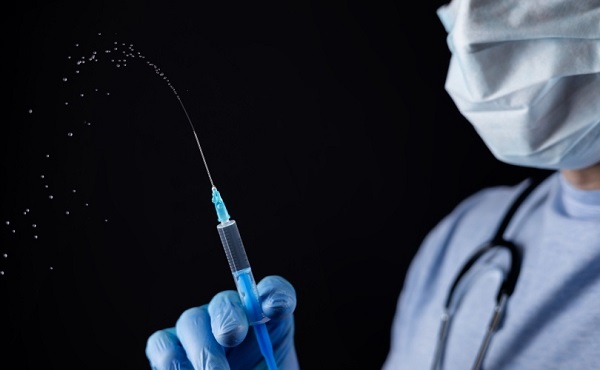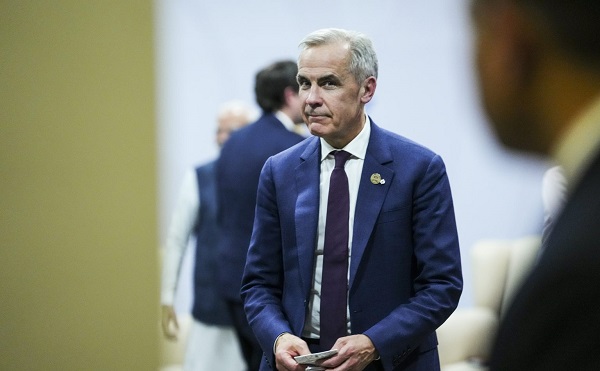Alberta
Canadian dairy plant becomes unlikely symbol of defiance for Ukrainian farmers
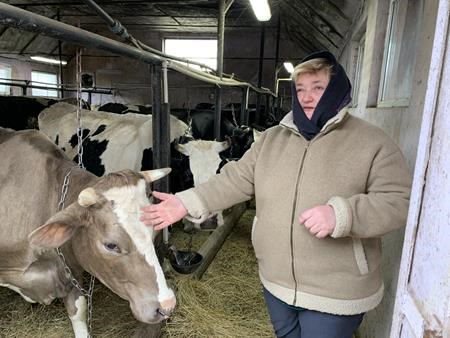
KRASNE, Ukraine — The cows on Lyuba Pastushok’s farm are like her “cheeky children,” she explained in Ukrainian as she walked among her growing herd, gently cooing to them and softly petting their heads.
A few years ago there were only five cows on her small family operation in Holoskovychi, a rural community an hour and a half east of the nearest city of Lviv, in western Ukraine.
Now she tends to 25 cows, six of which she bought after Russian forces invaded the country.
Wrapped up against the cold with a kerchief tied over her head, the Ukrainian matriarch pointed out each by name, her voice full of motherly pride.
She credits her success to the creation of a Quebec-style co-op in her community, and said a new Canadian dairy plant in the area is likely to help the local industry grow even more.
The project has become an unlikely symbol of defiance in the face of the Russian invasion.
Russia is stepping on Ukrainian farmers, Pastushok said through a translator during an interview in her farmhouse kitchen, “but we are developing in spite of them. We are who we are — Ukrainians.”
The $3-million dairy plant, funded by Global Affairs Canada, will produce milk, yogurt, sour cream and hard and soft cheeses using milk from the local dairy co-ops. Those co-ops will also have a stake in the management of the plant, which will employ 30 to 40 people.
Construction was already well underway when war broke out last year and disrupted every aspect of life in the now embattled country.
Investors at first shied away from putting their money into a project in conflict zone, said Camil Côté, the project officer for SOCODEVI, the Montreal-based development agency spearheading the project.
The invasion put a stop to the work for about three months, until Canada offered another $2 million to get it started again.
“Just like the whole of Ukraine, we survived the winter,” Côté said in an interview from Nicaragua.
“We have (had a) few dangerous situations near the plant,” said Andriy Blinovskyy, who manages the project on behalf of a corporation of local dairy co-ops called Nabil.
“We have missile explosion near the plant, when the electricity transformer station was destroyed maybe 10 kilometres from the plant.”
That explosion late last year forced workers to continue building through the winter without heat, using a generator for power.
When it’s up and running, the plant will mainly supply the Lviv region with locally produced products. The equipment and the brand new, gleaming milk tanks in each room carry Canadian flags.
“The factory is perceived as our own. Our country, our home, our family,” Pastushok said.
SOCODEVI first brought the Quebec-style co-op to Ukraine nearly a decade ago. It allows local producers with just a few cows to band together to negotiate for better prices.
“The needs in Ukraine are very similar to to what they were in Canada 50 or 60 years ago,” said Erin Mackie, a program manager for SOCODEVI.
“They were created because farmers needed to have that collective response in order to get the value added and to be able to generate a better income for themselves,” she said.
Ukrainian farmers were initially hesitant to sign on, since the co-operative model conjured memories of state-run operations under the Soviet Union. Mackie said the development agency worked to convince them that the plans was, in fact, democratic and capitalist.
The model is based largely on Quebec’s Agropur, the largest dairy co-op in Canada.
“This is how Agropur started, with a small co-op where you process milk,” said Céline Delhaes, who sits on the co-op’s board of directors, in an interview from her farm outside of Montreal.
She said it’s much easier for farmers to negotiate fair prices as a group than to negotiate one-to-one with large companies to process and sell their milk. She also said the profits will stay in local communities.
Delhaes travelled to Ukraine several times before the COVID-19 pandemic to coach local farmers and help them with the administrative aspect of setting up their co-ops.
The Ukrainian programs were growing steadily, as more and more farmers like Pastushok signed on, before the war began.
“People started selling cows. Some due to their illness, while young people went to work abroad. And it turned out that it became very expensive to cultivate the land,” Pastushok said.
She hopes more farmers in the region will join.
“We need to unite. Like this proverb, ‘One man in the field is not a warrior,'” she said.
Mackie said the aim is to create a national movement in Ukraine, in line with Canada’s dairy industry, and Canada’s decision to continue with the plant’s construction is a show of faith in the country’s future.
“It’s faith in the Ukrainian people, that they would overcome this,” she said.
The milk plant is by far the most modern-looking building in the area, its white siding and black roof standing out in stark contrast to its wood and stone neighbours.
Blinovskyy said he hopes it will be ready to accept milk from local cows this spring.
“It’s very powerful sign for all — for our enemies, for our friends, that Canada supports Ukraine and that the plant will start producing,” he said.
This report by The Canadian Press was first published March 15, 2023.
Laura Osman, The Canadian Press
Alberta
Emissions Reduction Alberta offering financial boost for the next transformative drilling idea
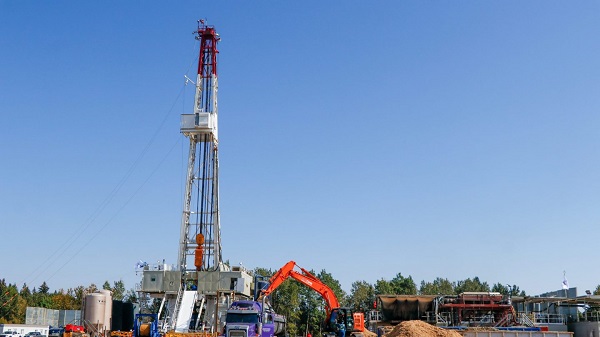
From the Canadian Energy Centre
$35-million Alberta challenge targets next-gen drilling opportunities
‘All transformative ideas are really eligible’
Forget the old image of a straight vertical oil and gas well.
In Western Canada, engineers now steer wells for kilometres underground with remarkable precision, tapping vast energy resources from a single spot on the surface.
The sector is continually evolving as operators pursue next-generation drilling technologies that lower costs while opening new opportunities and reducing environmental impacts.
But many promising innovations never reach the market because of high development costs and limited opportunities for real-world testing, according to Emissions Reduction Alberta (ERA).
That’s why ERA is launching the Drilling Technology Challenge, which will invest up to $35 million to advance new drilling and subsurface technologies.
“The focus isn’t just on drilling, it’s about building our future economy, helping reduce emissions, creating new industries and making sure we remain a responsible leader in energy development for decades to come,” said ERA CEO Justin Riemer.
And it’s not just about oil and gas. ERA says emerging technologies can unlock new resource opportunities such as geothermal energy, deep geological CO₂ storage and critical minerals extraction.
“Alberta’s wealth comes from our natural resources, most of which are extracted through drilling and other subsurface technologies,” said Gurpreet Lail, CEO of Enserva, which represents energy service companies.
ERA funding for the challenge will range from $250,000 to $8 million per project.
Eligible technologies include advanced drilling systems, downhole tools and sensors; AI-enabled automation and optimization; low-impact rigs and fluids; geothermal and critical mineral drilling applications; and supporting infrastructure like mobile labs and simulation platforms.
“All transformative ideas are really eligible for this call,” Riemer said, noting that AI-based technologies are likely to play a growing role.
“I think what we’re seeing is that the wells of the future are going to be guided by smart sensors and real-time data. You’re going to have a lot of AI-driven controls that help operators make instant decisions and avoid problems.”
Applications for the Drilling Technology Challenge close January 29, 2026.
Alberta
New era of police accountability
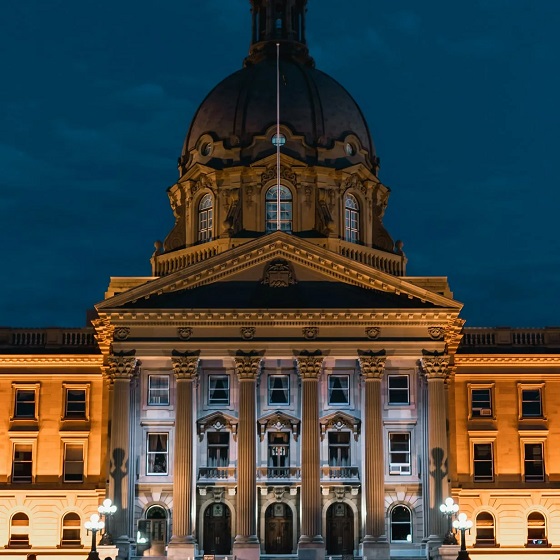
The Police Review Commission (PRC) is now fully operational, giving Albertans a single, independent process to file policing complaints and ensure accountability.
Alberta’s government is putting the province at the forefront of police oversight in Canada with the creation of the PRC. This new commission replaces the current patchwork of police investigating police with one independent body responsible for receiving complaints, conducting investigations and overseeing disciplinary hearings. By centralizing these functions within a single, independent agency, Alberta is ensuring complaints are handled fairly and consistently.
“The Police Review Commission represents a new era in how Alberta addresses policing complaints. These changes are part of a broader paradigm shift where police are no longer seen as an arm of the state, but rather an extension and a reflection of the community they serve. As an independent agency, it is committed to fairness, accountability and public trust, ensuring every complaint is investigated impartially and resolved openly.”
The Police Amendment Act, 2022 laid the groundwork for this new model, establishing a modern approach to oversight built on accountability, consistency and public confidence. The PRC will manage the full complaints process from receiving and assessing, to investigating and resolving complaints related to police conduct, including serious incidents and statutory offences.
“The Alberta Association of Chiefs of Police welcomes the launch of the Police Review Commission as a meaningful step toward enhanced oversight and greater transparency in policing. By ensuring complaints are reviewed fairly and impartially, the Commission will help strengthen accountability and reinforce public trust in Alberta’s police agencies. Police leaders across the province are committed to working with the Commission and our communities to ensure every Albertan has confidence in the integrity of our police services.”
A timely and transparent complaint resolution process is essential for both the public and police. That is why the PRC must complete investigations within 180 days, and if more time is needed, the chief executive officer must publicly report on delays and provide justification. This ensures clarity, predictability and accountability throughout the process. The commission will be arm’s length from government and police services, meaning people can have greater confidence that their complaints will be investigated and resolved impartially.
“Our goal is to build trust in policing by delivering timely resolutions and fair, consistent outcomes that put people first. Every complaint will be reviewed thoroughly and handled with the transparency and respect Albertans expect and deserve.”
The PRC can also initiate systemic reviews related to police conduct or emerging trends without the need for a public complaint, and these reviews must be made public. Together, these measures create a clear, accountable process that strengthens transparency, supports continuous improvement and enhances trust in how police oversight is carried out across Alberta.
“Public safety and the confidence the public has in our police services and service members are incumbent for effective and responsible service delivery. The PRC has been developed so that Albertans may have a responsible and impartial mechanism to voice concerns regarding delivery of policing services in Alberta. I am confident that the PRC will be an inclusive and diverse representation of the communities, so we may better understand the most appropriate and effective way to respond to concerns regarding police services. I look forward to the positive outcomes for the community.”
The commission’s design was informed by engagement with Indigenous communities, law enforcement partners, municipal officials and community organizations, ensuring its structure and training reflect Alberta’s diversity and values.
Quick facts
- The PRC will handle complaints in three categories:
- Level 1: Death, serious injury and serious or sensitive allegations involving all police services in Alberta, as well as peace officer agencies.
- Level 2: Allegations of criminal and other statutory offences involving all police services in Alberta.
- Level 3: Complaints about non-criminal misconduct involving officers employed by municipal and First Nations police services.
- Complaints that fall outside the three categories will be referred to the appropriate bodies or agencies for review.
- The Alberta Serious Incident Response Team (ASIRT) will now operate under the PRC.
-

 Addictions2 days ago
Addictions2 days agoManitoba Is Doubling Down On A Failed Drug Policy
-

 Food2 days ago
Food2 days agoCanada Still Serves Up Food Dyes The FDA Has Banned
-
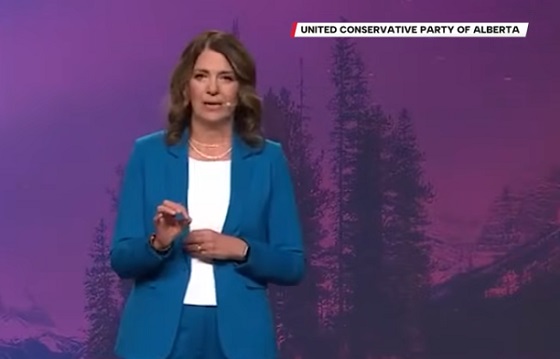
 Alberta2 days ago
Alberta2 days agoKeynote address of Premier Danielle Smith at 2025 UCP AGM
-
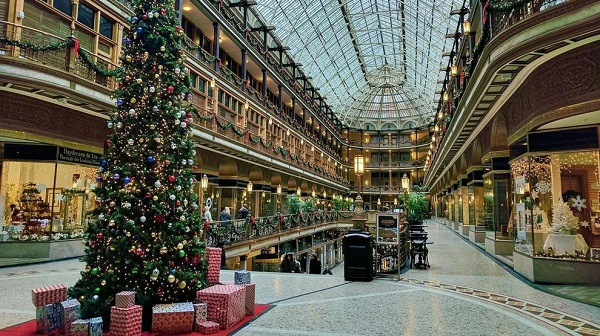
 Artificial Intelligence1 day ago
Artificial Intelligence1 day ago‘Trouble in Toyland’ report sounds alarm on AI toys
-
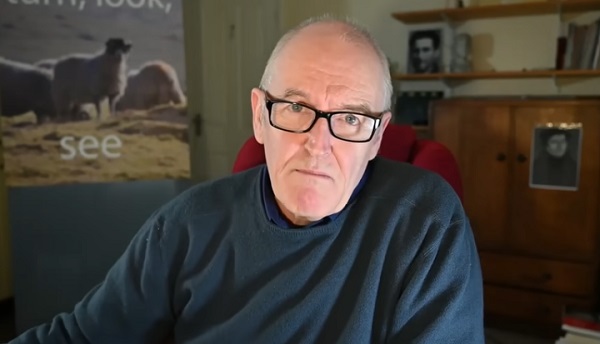
 COVID-192 days ago
COVID-192 days agoThe dangers of mRNA vaccines explained by Dr. John Campbell
-

 National24 hours ago
National24 hours agoMedia bound to pay the price for selling their freedom to (selectively) offend
-

 Daily Caller1 day ago
Daily Caller1 day agoTom Homan Predicts Deportation Of Most Third World Migrants Over Risks From Screening Docs
-

 Energy1 day ago
Energy1 day agoCanadians will soon be versed in massive West Coast LPG mega-project






